Cozumel Turtles
Cozumel Turtle Search, Rescue & Release Program: Our Experience
Gary & Patricia Gomola share their turtle story …
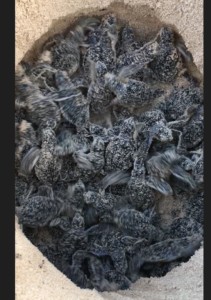 This week Patricia Wolf Gomola and I had what we consider an amazing experience. We did the Turtle Search, Rescue and Release program at San Martin Beach on the East side.
This week Patricia Wolf Gomola and I had what we consider an amazing experience. We did the Turtle Search, Rescue and Release program at San Martin Beach on the East side.
We have been coming to Cozumel for over 25 years. In fact, we met here on the island 24 years ago and got married a year later, and now live here part time (but that’s a whole different story). For years we knew that the program existed, but just never got around to doing it. Now we are kicking ourselves for not doing it sooner.
We are both animal lovers, and have had some wonderful animal experiences; diving with whale sharks in Galapagos, walking with Komodo Dragons on Komodo Island, playing with baby lions in Africa and baby tigers in Thailand (you get the idea). So it takes a lot to impress us, but the Cozumel Turtle Rescue did! We now include that in our list of great animal interactions.
We got in touch with the Biologist Rafael Chacon, who works with the FPMC Center for Conservation and Environmental Education You can reach them by e-mail, phone or Facebook messenger. We finally said “let’s do it” and sent a message to make a reservation.
We met the hard working volunteer crew at the Campamento Tortuguero San Martin at 3:30 pm. They then directed
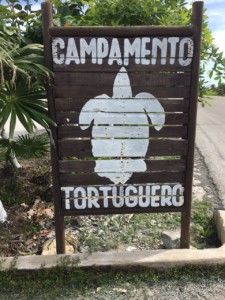
us to follow their vehicle a little bit south to the spot they were currently working. We walked down to the beach and saw a field of sticks in the sand. Each stick represented a turtle nest, some already hatched and others still waiting. The first thing we did was visit an already hatched nest. Each nest contains a 100 or more eggs, of which about 80% hatch and most of those make it to the surface and into the ocean. But a few weaker ones hatch but don’t make it to the surface and are trapped under three feet of sand. Our job was to dig three feet down on one of these already hatched nests and “rescue” the poor guys who were trapped.
You have to dig by hand with surgical gloves. It’s not easy digging down the three feet and you end up laying in the sand with your head and upper body in the hole. I ended up with sand in my pockets, hair, and every body orifice. When you reach the nest you pull out a few unhatched eggs, and lot of shells from the hatched eggs. Just when you think there is nothing else there, you feel something just a little bit different, grab a chunk of sand and bring it up to the surface. There in my hand was a squirming baby sea turtle who got “stuck”. So I went in again, felt around, and got another live baby. We ended up rescuing two turtles out of each of the two nests that we dug. So four baby turtles that would have died without this program, got a chance to live. It was so rewarding to
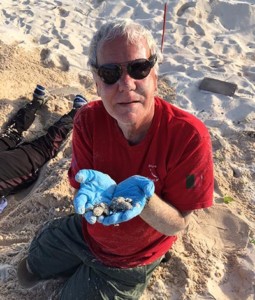
hold those babies in our hands knowing that.
The rescue step takes about two hours. Then at about 5:30 the crew moved us further down the beach for the “release” part. We thought that we had already experienced the best part and all we were going to do was release our four rescued turtles. We were wrong. They took us to a nest that was just hatching. We looked down and saw a 100+ baby turtles flopping around on top of each other in what they call a “boil”. It really did look like boiling water, except that it was turtles instead of water (it made a great video which is now on my Facebook page). After we marveled at the sight, one of the guys broke the side of the nest towards the water and these 100+ baby turtles started scampering towards the ocean. What a sight! We watched and followed them as they made their way to the ocean and plopped into the crashing waves. I wonder what was going through their minds at that point? One little guy kept heading away from the water, and we kept turning him around. He finally made it in. After that was done we released our four baby recues from the basket we had been carrying them in, and they waddled into the ocean as well. That was it. With a great sense of accomplishment, we headed back home with some great memories, photos, and videos.
Hopefully one day in the future we will be scuba diving on the reef and see one of these guys as an adolescent. I wonder if he will recognize us?
So, if you have been thinking about doing this …. don’t wait like we did. Do it. Great family adventure with early teens and up.
Gary R. Gomola and his wife, Patricia Wolf Gomola own Casa Tropical, a custom-built 3 bedroom condo in the centrally located El Cantil complex, in Cozumel.
Programa de búsqueda, rescate y liberación de tortugas en Cozumel. Nuestra experiencia.
Gary y Patricia Gomola comparten su historia con las tortugas…
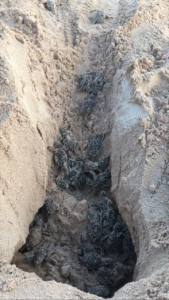
Esta semana Patricia Wolf Gomola y yo vivimos una experiencia increíble. Hicimos el programa de búsqueda, rescate y liberación de tortugas en la playa San Martín, al oriente de la Isla.
Hemos visitado Cozumel durante más de 25 años. De hecho, aquí nos conocimos hace 24 años y nos casamos un año después. Ahora vivimos aquí parte del tiempo (pero esa es otra historia). Durante años supimos de la existencia del programa, pero nunca lo hicimos. Ahora nos arrepentimos por no hacerlo antes.
Ambos amamos a los animales y tenemos unas experiencias maravillosas. Hemos buceado con tiburones ballena en las Islas Galápagos; caminado con los dragones komodo en la Isla Komodo, jugado con bebés león en África y bebés tigre en Tailandia (ustedes entienden). Así que se necesita mucho para impresionarnos, ¡y el rescate de tortugas en Cozumel lo hizo! Ahora incluimos eso entre nuestra lista de estupendas interacciones con los animales.
Nos pusimos en contacto con el biólogo Rafae Chacón que trabaja en el Centro de Conservación y Educación Medioambiental de la FPMC. Puede encontrarle a través de correo electrónico, teléfono o mensaje en facebook.
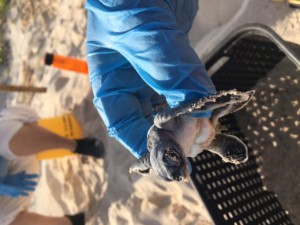
Finalmente nos decidimos a “hacerlo” y enviamos un mensaje para reservar.
A las 3:30 p nos reunimos con un grupo de voluntarios muy trabajadores en el campamento tortuguero de San Martin. Los seguimos en su vehículo a corta distancia hacia el sur del punto donde actualmente realizaban trabajos. Caminamos hacia la playa y nos percatamos de un sector de marcadores en la arena. Cada marcador representaba un nido de tortugas. Algunos ya habían eclosionado y otros estaban a la espera de hacerlo. Lo primero que hicimos fue visitar un nido ya eclosionado. Cada nido contiene 100 o más huevos de los cuales 80% eclosionan y la gran mayoría sube a la superficie y llega al mar. Los más débiles eclosionan, pero no llegan a la superficie y quedan atorados bajo tres pies de arena. Nuestra labor era cavar esos tres pies de uno de los nidos ya eclosionados y “rescatar” a los que estuvieran atorados.
Uno debe cavar usando guantes quirúrgicos. No es fácil cavar tres pues y uno acaba acostado sobre la arena con la
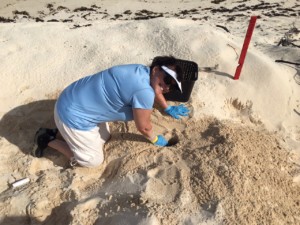
cabeza hacia abajo y la parte superior del cuerpo metidos en el agujero. Terminé con arena en mis bolsillos, cabello y todo orificio del cuerpo. Cuando uno llega al nido, se llevan a la superficie los huevos no eclosionados. En la mano sostuve a una tortuguita marina que se retorcía y que había quedado “atorada”. Así que volví a meterme, palpé y saqué a otro bebé vivo. Terminamos rescatando a dos tortugas por cada nido que cavamos. Así que cuatro tortugas que hubieran fallecido sin este programa, lograron la oportunidad de vivir. Fue muy gratificante sostener a esos bebés en las manos sabiendo eso.
La etapa del rescate dura alrededor de dos horas. Cerca de las 5:30 el equipo nos llevó cerca del mar para la parte de “liberación”. Supusimos que ya habíamos vivido la mejor parte y que lo único que haríamos sería liberar a las cuatro tortuguitas rescatadas. Nos equivocamos. Nos llevaron hacia un nido que recién estaba eclosionando. Eran poco más de 100 tortuguitas aleteando una sobre la otra, en lo que coloquialmente llaman “ebullición”. Realmente parecía agua hirviendo, pero se trataba de tortugas y no de agua (hice un gran video que aparece en mi página Facebook). Después de maravillarnos con el espectáculo, uno de los muchachos rompió un lado del nido en dirección al mar y estas más de 100 tortuguitas comenzaron a correr hacia el mar. ¡Qué espectáculo! Las observamos y seguimos conforme llegaban al mar y entraban a las olas. Me pregunto que cruzaba en ese momento por sus mentes. Un pequeño se alejaba a cada rato del mar y constantemente lo volteábamos hacia éste. Finalmente entró al agua. Al concluir este paso, sacamos de la canasta a nuestras tortugas rescatadas, las liberamos y también se dirigieron balanceándose hacia el mar. Así fue. Con una gran sensación de logro, regresamos a casa acompañados de grandes recuerdos, fotografías y videos.
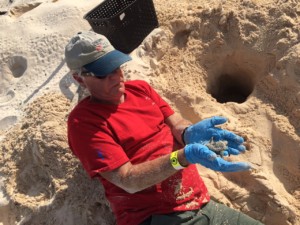
Esperamos que algún día en el futuro al estar buceando un arrecife, logremos ver a uno e estos chicos en su adolescencia. Me pregunto si nos reconocerá.
Si ha pensado en hacer esto, no se espere tanto como nosotros. Hágalo. Es una gran aventura en familia, desde los primeros años de la adolescencia hasta mayores.
Gary R. Gomola y su esposa, Patricia Wolf Gomola, tienen Casa Tropical, un condominio construido a la medida, con tres habitaciones en el complejo El Cantil ubicado en el centro en Cozumel.
______________________________
Una ex yanqui de Connecticut quien llama hogar a Cozumel desde hace más de 15 años. Laura escapó al Caribe hace años, desplazándose de una isla a otra dando clases de BUCEO. Se dedicó a perder el tiempo en Jamaica y finalmente se detuvo en Cozumel para pasar unas vacaciones de 2 semanas que aún no terminan. Convenciendo a sus padres que pagaran una elegante universidad privada, obtuvo su título en Periodismo y Laura crea semanalmente Cozumel 4You, medios sociales y artículos promocionales sobre la Isla y también es moderadora en el grupo Cozumel 4 You en Facebook que actualmente cuenta con 25,000 miembros. Fabián, s umuy tolerante marido, desde hace mucho tiempo se resignó a no tener vida privada, pues se ha visto implicado en los diversos proyectos y planes que urde Laura. Son orgullosos padres de diversos perros y gatos rescatados. Mientras contempla su paso a través de la vida en el Caribe mexicano,Laura continúa siendo la pesadilla en la existencia de su muy tradicional suegra mexicana.
- Cozumel Cruise Ship Passenger Tax - July 18, 2025
- Whale Shark Season 2025 - July 18, 2025
- Cozumel Pitaya Season - July 18, 2025
An ex-Connecticut Yankee who has called Cozumel home for over 18 years, Laura ran away to the Caribbean years ago, bumped around the islands teaching SCUBA diving, lost some time in Jamaica, and finally stopped in Cozumel for a 2 week vacation that hasn’t ended yet. With a degree in Journalism from a fancy private college she convinced her parents to pay for, Laura writes, edits, and creates the weekly Cozumel 4 You news, social media, and promotional articles about the island, as well as moderates the Cozumel 4 You Facebook group, which currently has over 25,000 members. Her long suffering husband, Fabian, has long since resigned himself to having zero private life, as he’s been involved in her various schemes and plots since his arrival. Proud parents to a variety of rescue dogs and cats, Laura continues to be the bane of her traditional Mexican mother-in-law’s existence, as she muses her way through life in the Mexican Caribbean. ______________________________ Una ex yanqui de Connecticut quien llama hogar a Cozumel desde hace más de 15 años. Laura escapó al Caribe hace años, desplazándose de una isla a otra dando clases de BUCEO. Se dedicó a perder el tiempo en Jamaica y finalmente se detuvo en Cozumel para pasar unas vacaciones de 2 semanas que aún no terminan. Convenciendo a sus padres que pagaran una elegante universidad privada, obtuvo su título en Periodismo y Laura crea semanalmente Cozumel 4You, medios sociales y artículos promocionales sobre la Isla y también es moderadora en el grupo Cozumel 4 You en Facebook que actualmente cuenta con 25,000 miembros. Fabián, s umuy tolerante marido, desde hace mucho tiempo se resignó a no tener vida privada, pues se ha visto implicado en los diversos proyectos y planes que urde Laura. Son orgullosos padres de diversos perros y gatos rescatados. Mientras contempla su paso a través de la vida en el Caribe mexicano, Laura continúa siendo la pesadilla en la existencia de su muy tradicional suegra mexicana.
Cozumel Pitaya Season
Cozumel Pitaya Season Pitaya Season is Almost Here! Pitaya, also known...
Loggerhead Turtle Rescue Cozumel
Loggerhead Turtle Rescue Cozumel Loggerhead Turtle Rescued From Playa San Martin ...
June Hot Weather Bees Cozumel
June Hot Weather Bees Cozumel June’s Hot Weather Can Bring Out...
2025 Cozumel Caribbean Hurricane Season
2025 Cozumel Caribbean Hurricane Season 2025 Cozumel Caribbean Hurricane Season Meteorologists...







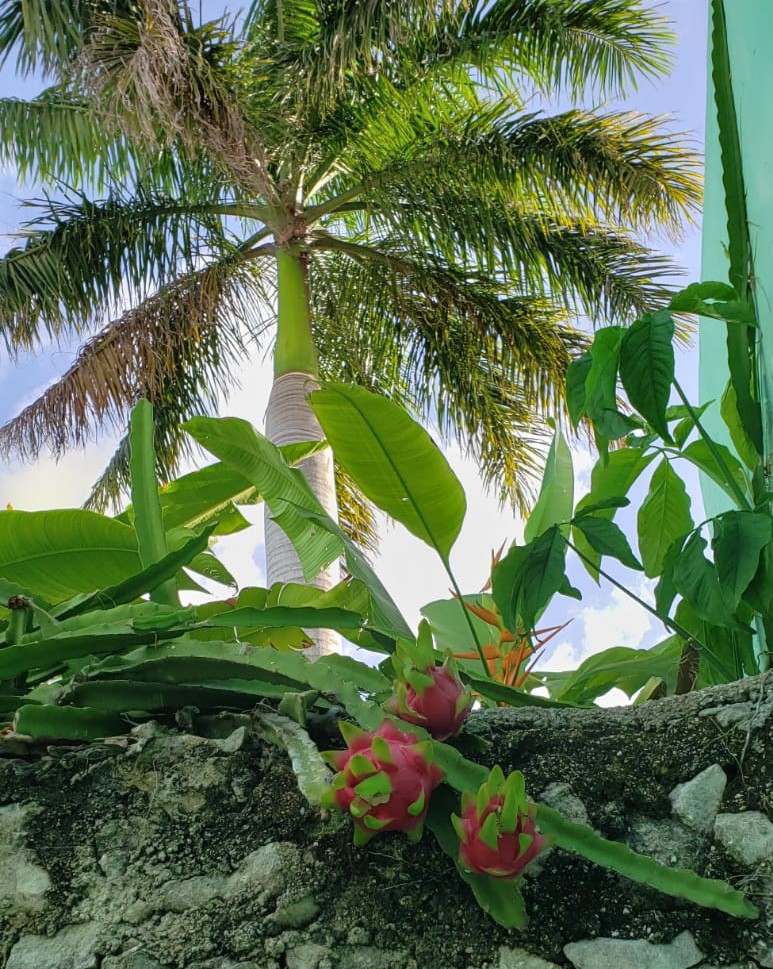
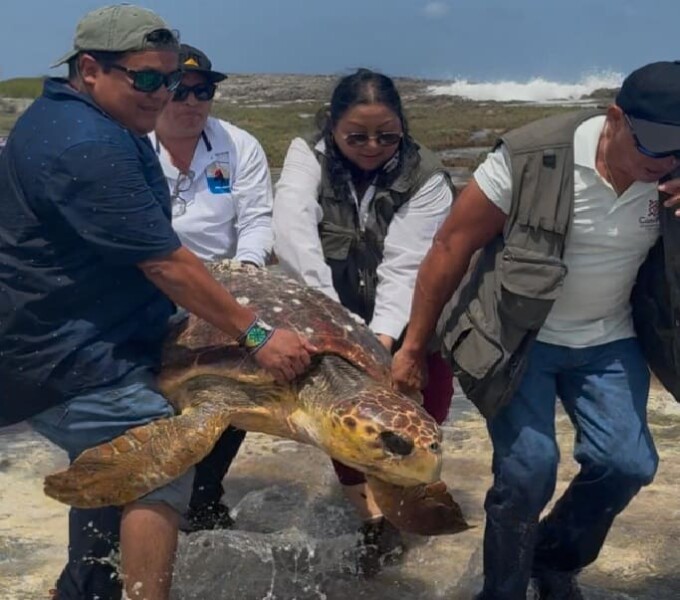

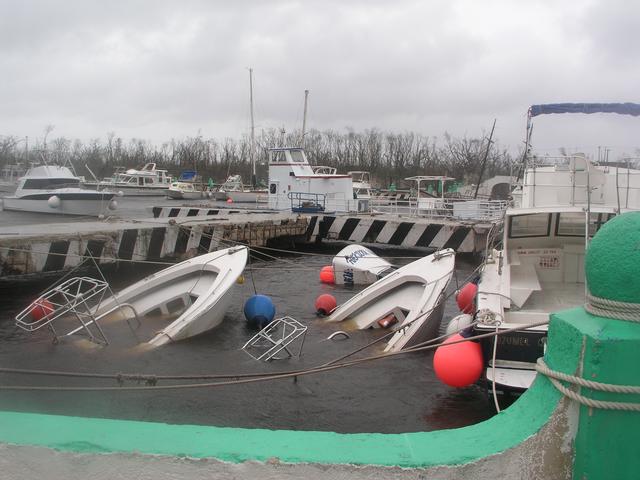

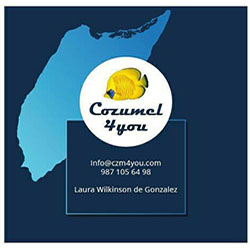

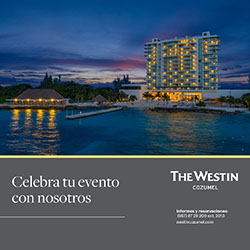

Leave a comment